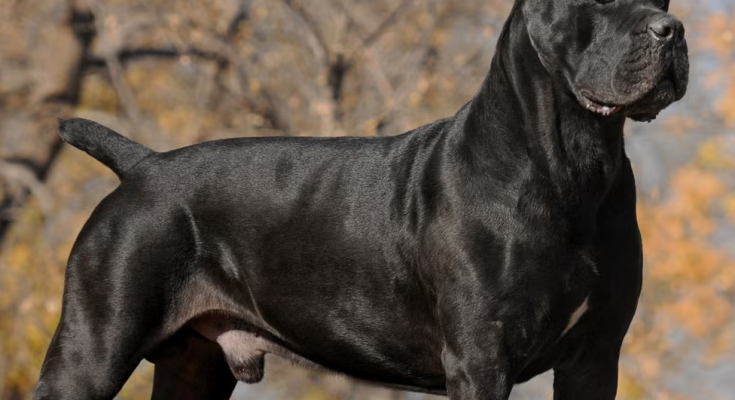
The Cane Corso, pronounced “KAH-neh KOR-so,” is a powerful and majestic Italian breed of mastiff, recognized for its impressive presence, keen intelligence, and unwavering loyalty. Often referred to as an “Italian Mastiff,” its name roughly translates from Latin as “bodyguard dog” or “guard dog of the courtyard,” a testament to its historical role.
History and Origin: The Cane Corso’s lineage stretches back to ancient Roman times, descended from the “Canis Pugnax” (Roman Molossian war dogs). These ancestors were formidable canines used in warfare and later adapted to various civilian roles. After the Roman Empire, the breed became versatile farm dogs in the Italian countryside, guarding property and livestock, hunting large game like wild boar, and even herding cattle. The breed faced near extinction after World War II but was revived in the 1970s by a group of dedicated enthusiasts. It gained official recognition from the American Kennel Club (AKC) in 2010.
Appearance: Cane Corsos are large, muscular dogs with a sturdy and athletic build. Males typically stand 25 to 27.5 inches tall, while females are slightly smaller at 23.5 to 26 inches. Their weight is proportionate to their height, often ranging from 88 to 110 pounds or more. They possess a large head, an alert expression, and a short, stiff coat that comes in various colors, including black, black brindle, chestnut brindle, fawn, gray, gray brindle, and red. They may also have a black or gray “mask” on their face.
Temperament and Characteristics: The Cane Corso is known for being:
- Intelligent and Trainable: They are smart, eager to please, and respond well to consistent, positive reinforcement training.
- Loyal and Affectionate: While they might appear intimidating, they are intensely devoted to their families and often described as “velcro dogs” due to their desire to be close to their humans. They are generally gentle and tolerant with children in their family when properly socialized.
- Protective and Alert: Their innate guarding instincts make them excellent watchdogs and protectors of their home and family. They can be reserved or suspicious of strangers and other animals, highlighting the importance of early and extensive socialization.
- Even-Tempered and Stable: With proper upbringing, they are well-balanced and calm within their family environment.
- High Energy and Needs a Job: Being a working breed, Cane Corsos require significant physical and mental stimulation. Daily brisk walks, runs, and engaging activities like agility, obedience, or tracking help keep them healthy and prevent boredom. They are happiest when they have a purpose.
Health and Lifespan: The average lifespan of a Cane Corso is typically 9 to 12 years. Like many large breeds, they can be prone to certain health conditions, including:
- Hip and Elbow Dysplasia: Genetic conditions affecting joint development.
- Idiopathic Epilepsy: A neurological disorder characterized by recurrent seizures.
- Demodectic Mange: A skin condition caused by mites.
- Eyelid Abnormalities: Such as entropion (inward rolling of the eyelid) and ectropion (outward sagging of the eyelid), and cherry eye.
- Gastric Torsion (Bloat): A life-threatening condition where the stomach fills with gas and twists, common in deep-chested breeds.
Responsible breeders screen their dogs for these conditions to promote healthy offspring. Regular veterinary check-ups and a healthy diet are crucial for their well-being.
Training and Socialization: Early and consistent socialization is paramount for a Cane Corso. Exposing puppies to various people, places, sounds, and other animals in a controlled and positive manner from a young age (ideally between 3 and 14 weeks) is vital to help them develop into well-adjusted adults and manage their protective instincts. Training should be firm, fair, and consistent, establishing the owner as the clear leader. Due to their strong will and protective nature, Cane Corsos are generally recommended for experienced dog owners who can dedicate the time and effort required for their extensive training and socialization needs.
